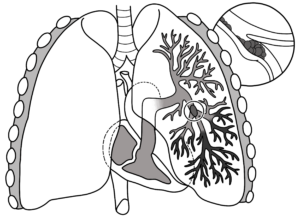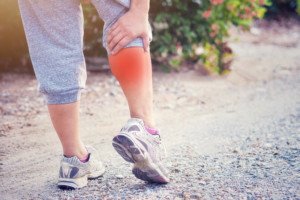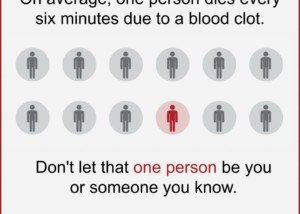For the many people who are worried that all the hiking they do, or even just occasional hiking, might give them a DVT (blood clot), here is in-depth information.
A lot of people are wondering if hiking – be it recreational, hardcore, infrequent or regular – could possibly cause blood in the legs to clot up, resulting in a deep vein thrombosis.
People who smoke or have other risk factors for a blood clot, such as being on birth control and being overweight, may be particularly interested in this topic.
“There is no connection with hiking being a cause of deep vein thrombosis,” begins Dr. Lawrence Presant, DO, chief medical officer at Arizona Vein Specialists, and an expert on blood clots.
Dr. Presant explains, “One of the causes of DVT is sluggish blood flow. Exercise increases the velocity of blood flow, so hiking would be counter to the cause of DVT.
“Hiking would be an activity I would recommend to prevent DVT.”
So then, where did the idea arise that going on a hike could lead to a deep vein thrombosis?
I found this question in a vascular disease forum; it was a thread that had many views but no substance in terms of answers.
I gather that the reason this thread generated so many views is because we live in a very sedentary society, and the idea of hiking – especially long or strenuous excursions – seems to many people to be harmful to the body.
This is how lazy modern peoples have become!
The opposite is true: A sedentary lifestyle is one of the numerous risk factors for a DVT.
The “sitting disease” is a risk factor for a DVT – sitting for many hours on a daily basis.
And of course, there are the other classic lifestyle risks or causative agents for a blood clot in a vein: recent major surgery (especially joint and abdominal); prolonged inactivity during an airline flight; and pregnancy.
How can anyone come up with the idea that hiking might cause a DVT? Answer: People who’ve been so indoctrinated into an inactive lifestyle that they actually fear that vigorous activity could be harmful.
Ancient humans would not have survived over many millennia if they had not done tons of treks over unforgiving terrain in all sorts of climates.
History of a Blood Clot
Hiking is also safe for people who’ve already had a DVT.
Just make sure you get clearance from your doctor as far as when you can resume exercise.
Why is a DVT so dangerous?
A clot in a deep vein of the leg or hip can suddenly break away from its post (either in whole or a fragment) and within moments be whisked smack into the lungs.
Risk of Pulmonary Embolism: The most serious complication of DVT is a pulmonary embolism (PE).
This occurs when a blood clot breaks loose from the deep veins in the legs or other parts of the body and travels to the lungs.

Pulmonary embolism
In the lungs, it can block a pulmonary artery, leading to severe respiratory issues, decreased oxygen levels and even sudden death if the clot is blocking the portion where the pulmonary artery splits into each lung (“saddle embolism”).
Potential for Chronic Pain and Swelling: Even if a DVT does not lead to a PE, it can cause long-term problems.
Clots can damage the veins and cause chronic pain, swelling and discomfort in the affected leg.
This post-thrombotic syndrome can significantly impact quality of life – and this includes impairing the ability to experience a glorious hike.
A DVT can restrict movement due to pain and swelling, affecting a person’s ability to even perform typical daily activities.
Increased Risk of Recurrence: Once a person has had a DVT, they are at higher risk for developing future blood clots.
Take a Hike
If you’re a “DVT-phobe,” then hiking is just what the doctor ordered.
Just make sure you wear sunblock, plus a wide-brimmed hat and shoes that are designed for walking on rough and varied terrain.
And don’t forget your water and a fully charged phone.
DVT Calf Pain vs. Pulled Calve Muscle Soreness
 Dr. Lawrence Presant, DO, is chief medical officer at Arizona Vein Specialists in Phoenix, and a certified diplomat of the American Board of Venous and Lymphatic Medicine. A vein surgeon specialist, his passion is phlebology, the diagnosis and treatment of painful and unsightly vein disorders.
Dr. Lawrence Presant, DO, is chief medical officer at Arizona Vein Specialists in Phoenix, and a certified diplomat of the American Board of Venous and Lymphatic Medicine. A vein surgeon specialist, his passion is phlebology, the diagnosis and treatment of painful and unsightly vein disorders.
 Lorra Garrick is a former personal trainer certified through the American Council on Exercise. At Bally Total Fitness she trained women and men of all ages for fat loss, muscle building, fitness and improved health.
Lorra Garrick is a former personal trainer certified through the American Council on Exercise. At Bally Total Fitness she trained women and men of all ages for fat loss, muscle building, fitness and improved health.
.










































